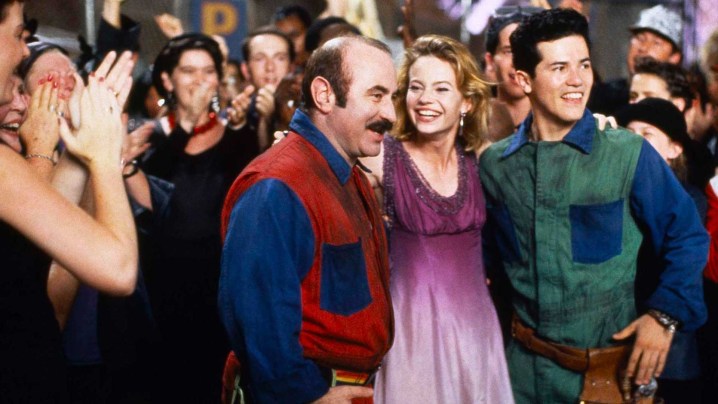In the long history of adapting video games to the big screen, there’s been plenty of failures. Most video games don’t work on the big screen for all the reasons you usually hear about: They’re too expansive, too play-driven, or too focused on lore. In that long history, though, there’s one movie that stands apart from the rest because of the sheer volume of stink on its reputation.
1993’s Super Mario Bros. is perhaps the nadir of bad video game adaptations, and the movie every other adaptation seeks to avoid becoming. Now, as the world prepares for yet another big-screen Mario adaptation with The Super Mario Bros. Movie, it’s worth looking back on this 1993 film and figuring out whether that reputation is actually merited.
Super Mario Bros. is, unfortunately, as bad as you remember
It would be much better for this article, and for the discourse more generally, for there to be some reasons to defend Super Mario Bros., and there are a few. Bob Hoskins, in spite of giving interview after interview in which he made it perfectly clear he had no idea what was happening in the movie he was starring in, is still genuinely captivating in the lead role. Coming off of Who Framed Roger Rabbit, he’s an inspired bit of casting, and perhaps the only element of this movie that compels in the slightest.
Past that, though, Super Mario Bros. makes so many genuinely bizarre choices that it’s no wonder it alienated both those who were familiar with the games and those who weren’t. It seems designed to be unappealing to as many people as possible striking a middle ground between commitment to the fantastical world of the games and establishing a more grounded, gritty reality for its characters to live in.

The film follows Mario and his brother Luigi as they are transported to a parallel dimension after a woman named Daisy (for some reason not Peach) is kidnapped. Instead of attempting to recreate the world of the game, though, the movie takes elements from the game and transplants them into its own version of Manhattan, for some reason named Dinohattan. It’s really quite strange!
This approach was clearly meant to make the movie seem more appealing to those unfamiliar with the Mario games, which in 1993 was likely a much larger slice of the population than it is today. That’s a fine reason, but the results really do speak for themselves. The movie, in spite of its quite sizable budget, was both a critical and commercial flop, and its reputation has not improved in the years since.
The best thing about Super Mario Bros.

In spite of its failure on a basic, storytelling level, the movie’s visual effects do deserve some genuine praise. Especially in an era when most creatures are rendered with the help of CG, the goombas and other creatures that inhabit Dinohattan do feel like they have genuine heft and weight to them. They’re practical, and that’s part of what makes them feel so distinct when compared to many more modern video game adaptations.
Ultimately, though, Super Mario Bros. fails to capture the spirit of joy and whimsy that the game so often could. Instead, it arrived in 1993 limp and uninspired, and there’s no reason to defend it now. There are some movies that we got dreadfully wrong when they were first released in theaters. Unfortunately for anyone hoping otherwise, Super Mario Bros. is not one of them.



